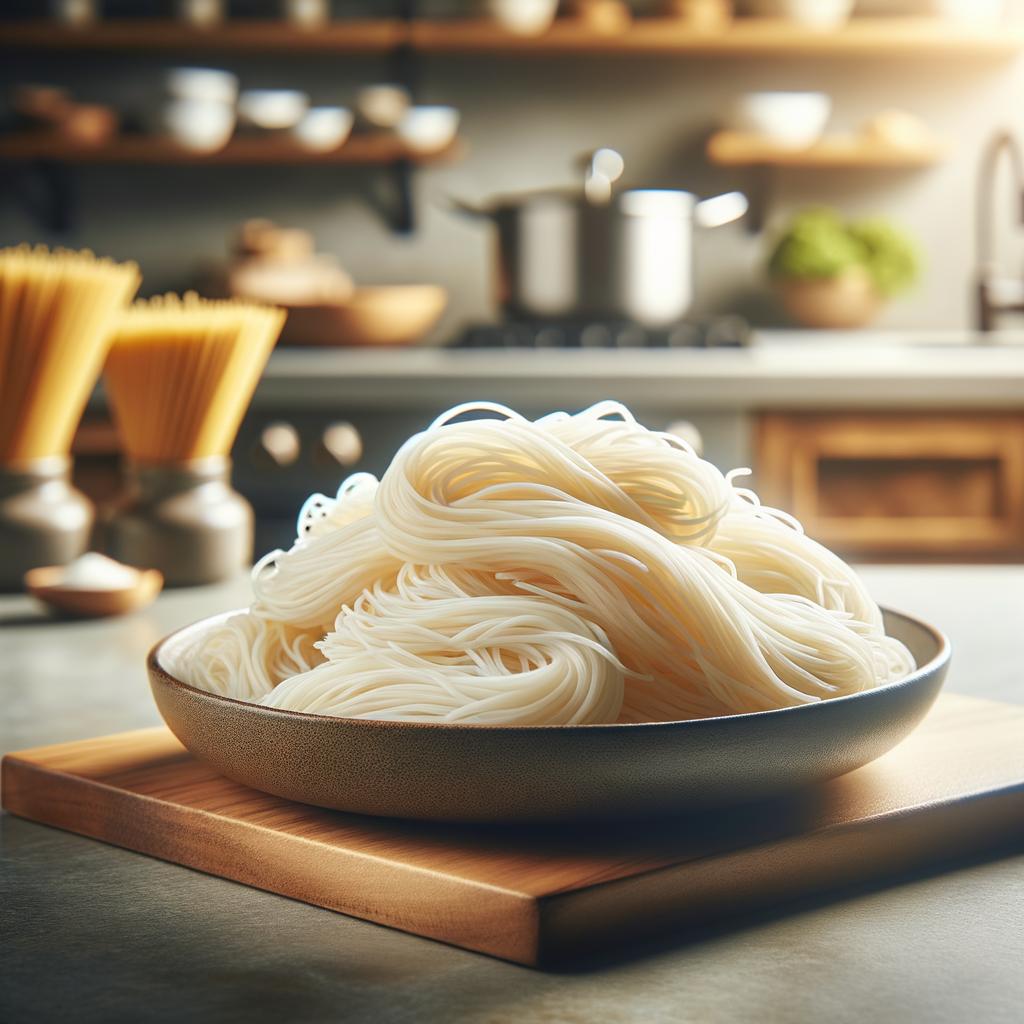Rice Noodles

Description
Rice noodles, also known as bánh phở in Vietnamese, are a captivating ingredient that originate from the heart of Asia. They are thin, translucent strings of delight, exhibiting a delicate, almost ethereal appearance that belies their robust nature. Their texture is soft yet firm, providing a satisfying bite that is a joy to savor. The flavor profile of rice noodles is subtle and understated, serving as a blank canvas that readily absorbs the flavors of the ingredients they are paired with. What sets rice noodles apart from their wheat-based counterparts is their gluten-free nature, making them a preferred choice for those with dietary restrictions.
Primary Uses
Rice noodles are a versatile ingredient, used extensively in a variety of Asian cuisines. They are the star in the Vietnamese soup dish phở, and a key player in the Thai stir-fry dish, Pad Thai. Chinese cuisine uses them in a variety of soups and stir-fry dishes, while Filipino Pancit Bihon wouldn't be the same without them. Beyond the culinary world, rice noodles have a cultural significance in Asia, often symbolizing longevity and health in traditional feasts and celebrations.
History
The history of rice noodles is as rich as the broths they are often soaked in. They are believed to have originated in China during the Qin dynasty (221-206 BC), and their popularity spread across Asia over the centuries. The Vietnamese embraced rice noodles and made the world-renowned dish, phở, a symbol of their culinary identity. In Thailand, the introduction of rice noodles led to the creation of Pad Thai, a dish so beloved it is now considered a national treasure. The history of rice noodles is filled with tales of cultural exchange, adaptation, and culinary innovation.
Nutritional Information
Rice noodles are not just a culinary delight, but also a nutritious ingredient. They are low in fat and a good source of carbohydrates, providing a steady release of energy. As they are made from rice flour, they are naturally gluten-free, making them a great alternative for those with gluten sensitivities. Compared to wheat noodles, rice noodles have fewer calories and less protein. However, they are often served in dishes rich in vegetables, proteins, and spices, making them part of a balanced meal. The health benefits of rice noodles are many, but like all foods, they should be enjoyed in moderation as part of a varied diet.

